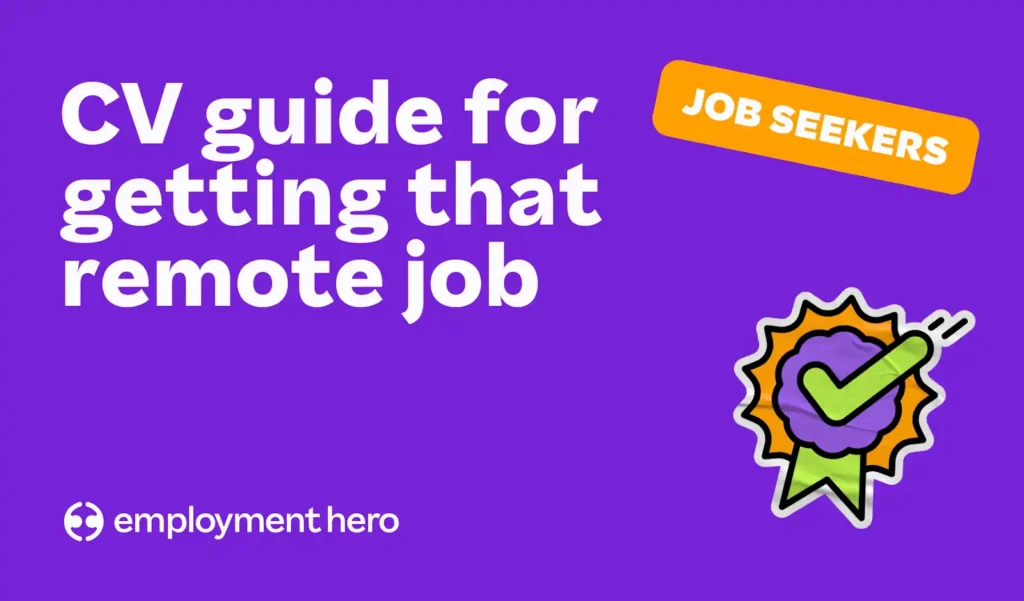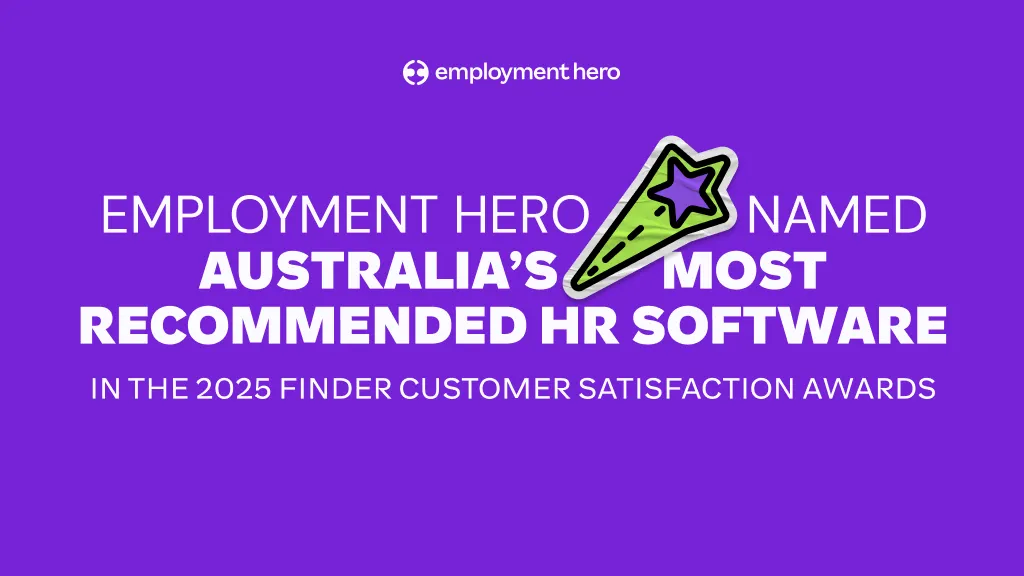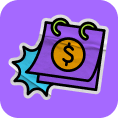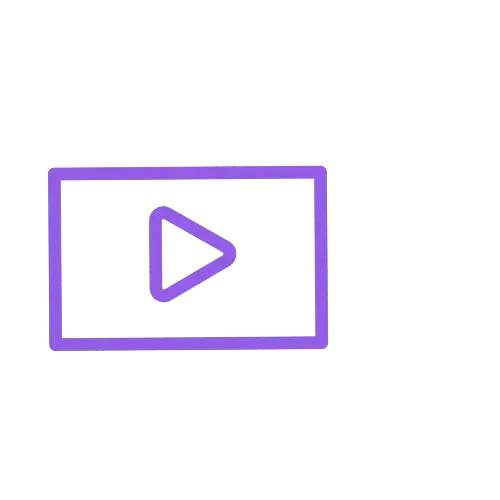How to write a resume or CV for remote jobs in Australia 2025

Contents
Are you ready to step into the exciting world of remote work? Crafting a standout resume is your first move toward landing your dream remote job in 2025. Employers are looking for applicants who not only fit the role but also thrive in remote environments. This guide will show you how to create a resume tailored specifically for remote positions in Australia.
CV vs Resume for remote jobs in Australia
Before you begin, it’s important to understand the distinction between a CV and a resume. A resume provides a brief overview of your skills and experience, usually one to two pages and is customised for a particular job application. In contrast, a CV (curriculum vitae) is a more extensive document that can span several pages, outlining your complete career, academic history and other key details.
These days the terms are often used interchangeably. While “resume” is the more commonly used term in Australia, “CV” is still used in certain industries, such as academia or public service. No matter what the job ad specifies, remote roles typically require a concise resume that’s one to two pages long.
Hero Tips:
- Use “resume” as your primary term for most private-sector roles.
- For industries that do request a CV, ensure you match the level of detail required (such as for academic applications).
Is the job truly remote?
Not all jobs marketed as “remote” give you the flexibility you might expect. The term “remote-first” refers to companies designed around distributed teams, while “remote-friendly” often indicates a hybrid work setup. Before you tailor your resume, assess the job listing carefully to ensure the role is fully remote.
You want to know for sure whether you need to budget for an in-office wardrobe or whether slippers can be your daily footwear.
How to spot true remote roles in job ads:
- Look for phrases like “remote-first,” “work from anywhere,” or “distributed workforce.”
- Check for location requirements like “must be based in Australia” to avoid wasted applications.
Tailor your resume for remote jobs
Generic resumes rarely make it to the top of an employer’s shortlist. Customisation is key when applying for remote roles.
How to align your resume with remote roles:
- Match your experience to the job ad: Mirror the language used in the job description to highlight relevant skills and qualifications.
- Align with company values: Research the employer to ensure your resume reflects their mission and culture.
- Use keywords for ATS optimisation: Many companies use Applicant Tracking Systems (ATS) to streamline hiring. Include keywords from the remote job description to pass ATS filters effortlessly.
Example:
Job requirement: “Proficiency with collaboration tools like Slack and Trello.”
Resume bullet point: “Led cross-time-zone projects using tools like Slack and Trello, boosting team efficiency by 20%.”
Showcase remote work skills and digital tools
Remote employers are particularly focused on skills that demonstrate your ability to work independently and stay productive in a distributed environment.
Top remote skills employers look for:
- Self-motivation and time management
- Communication skills, particularly for asynchronous collaboration
- Problem-solving and adaptability
Digital tools that signal remote readiness:
- Communication: Slack, Zoom, Microsoft Teams
- Project management: Trello, Asana, Jira
- Document collaboration: Google Workspace, Notion
Example section in your resume:
Key Skills and Tools
- Time Management | Prioritisation | Remote Collaboration
- Tools: Slack, Zoom, Trello, Google Workspace
Avoid these resume-writing pitfalls
Mistakes in your resume can cost you a remote job opportunity. Ensure your resume is polished, professional, and free of the following:
- Outdated buzzwords: Replace dated terms with specific examples (e.g., “team player” becomes “collaborated with a distributed team across three time zones”).
- Vague claims: Use quantifiable achievements instead of generic statements (e.g., “Improved client retention by 15% through tailored outreach campaigns”).
- Poor formatting: Keep it simple with clean fonts, clear section headers, and appropriate spacing.
Use metrics to highlight achievements
Quantifiable results give employers concrete evidence of your impact in previous roles. Incorporating metrics makes your accomplishments more compelling and memorable.
Look at a resume bullet point formula that includes: Action Verb + Task + Result (with metrics).
Example: “Spearheaded a marketing campaign that increased website traffic by 40%, resulting in $10,000 additional monthly revenue.”
Include relevant links and portfolios
Strong remote resumes often include links to LinkedIn profiles, personal websites or digital portfolios. These offer hiring managers an easy way to explore your work and online presence.
Where to place links:
Add a “Professional Links” section near your contact information or at the top of your resume. If you’re submitting a digital copy, make sure these links are clickable. Include the following:
- A polished LinkedIn profile tailored to remote roles.
- A personal website showcasing work samples or achievements.
- Project portfolios that demonstrate relevant experience.
What makes a strong online portfolio?
A strong online portfolio should be easy to navigate and visually appealing. It should feature your best work, clearly demonstrate your skills and be tailored to the types of remote jobs you’re applying for. Think about including case studies, testimonials, and a brief explanation of your role in each project to give employers a complete picture of your capabilities.
Career changing? How to pivot into remote work
Even if you’ve never worked a remote-only role before, you might have some great transferable skills from cross-country projects, virtual collaboration or regularly working from home in a hybrid arrangement. Let’s take your existing skills and translate them into remote-ready value.
Identify and reframe transferable skills
Even if you always worked in an office, you probably have many skills that are useful for remote work. Think about skills that show you can work on your own, talk well with others, manage your time, and motivate yourself.
- Talking with others: Did you often talk to co-workers or clients by email, chat, or phone? Show off your writing and speaking skills, especially for online communication.
- Time Management & Staying Organised: Did you have to manage your own projects, deadlines, or schedules? Emphasise that you can prioritise tasks, meet deadlines, and stay organised without someone always watching over you.
- Solving Problems & Being Flexible: Did you fix problems by yourself? Show your ability to solve problems and adjust to new tools, ways of working, or challenges.
- Good with Technology: Even if your job wasn’t remote, you likely used different software or tools. List them and explain how knowing technology makes you a good fit for remote work.
- Self-Motivation & Taking Initiative: Did you start tasks or finish them without being told? Show that you can stay focused and get things done when working independently.
When you talk about your past jobs, change how you describe them to highlight these remote-friendly parts. Instead of just saying what you did, explain how you did it in a way that proves you’re ready for remote work.
How to address remote work experience gaps
It’s common for people looking for remote jobs to not have specific remote experience. Don’t let this stop you. Here’s how to handle it well:
- Talk about relevant projects and achievements: Think about any projects where you worked alone, managed your own time, or worked with others remotely (even if it was a small part of an office job).
- Show your existing skills (as mentioned above): Repeat the skills you’ve identified and give clear examples of how you used them in past jobs, showing you’re ready for remote work.
- Do relevant training or get certifications: If you can, consider taking online courses or getting certified in things like remote team tools (like Slack, Asana, Zoom), project management, or online communication. This shows you want to learn remote-specific skills.
- Volunteer or do freelance work: Doing remote volunteer work or small freelance jobs can give you good experience and show you can work on your own in a remote setting.
- Write a strong cover letter: Use your cover letter to directly talk about the lack of remote experience. Explain why you want to work remotely and how your current skills and willingness to learn make you a great candidate. You can also mention anything you’ve done to get ready for remote work.
Focus on your excitement and ability to learn quickly. Show how eager you are to work remotely and how quickly you can learn new tools and adapt to different work environments. Companies often look for people who can adapt and have a good attitude towards remote work.
Final checklist to perfect your resume
Before hitting “submit,” go through this quick checklist to ensure your resume is ready:
- Spelling and grammar have been thoroughly proofread.
- Formatting is consistent and ATS-friendly.
- Keywords from the job description have been naturally integrated.
- Quantifiable achievements are highlighted.
- Relevant links and digital portfolios are included.
Your next steps toward a remote career
Your resume is your ticket to an exciting remote career. By tailoring your document for remote roles, showcasing the right skills and avoiding common pitfalls, you’ll set yourself up for success. Now’s the time to act. Polish your resume, land an interview and prepare for a day-one-ready start to your new remote job. Unlock your full potential and start your job search with Employment Hero Jobs today.
Related Resources
-
 Read more: Employment Hero Named Australia’s Most Recommended in 2025 Finder Awards
Read more: Employment Hero Named Australia’s Most Recommended in 2025 Finder AwardsEmployment Hero Named Australia’s Most Recommended in 2025 Finder Awards
Employment Hero was voted the most trusted and recommended HR software in the 2025 Finder awards from more than 60,000…
-
 Read more: Employment Uncovered 2025: The Story of Australian Work
Read more: Employment Uncovered 2025: The Story of Australian WorkEmployment Uncovered 2025: The Story of Australian Work
Inside the story of Australian work in 2025. From rising ‘sickies’ to hiring fatigue, see how workforce patterns are shifting.…
-
 Read more: PEO vs. EOR: A guide to global hiring
Read more: PEO vs. EOR: A guide to global hiringPEO vs. EOR: A guide to global hiring
Learn the key differences between a PEO and an EOR. Discover why an EOR is the smarter, safer way to…























